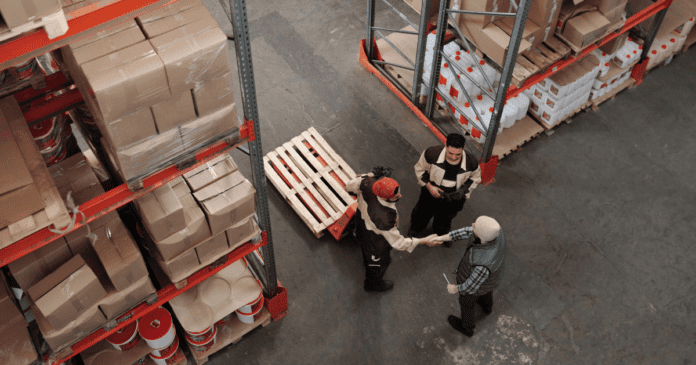Starting and running a business can be an exciting endeavor, but it also comes with its challenges, particularly when it comes to buy wholesale products. Whether you’re a new entrepreneur or an established business owner, buying wholesale products can help you save money and increase your profit margins. However, it can be daunting to navigate the world of wholesale purchasing. In this article, we’ll explore some tips and strategies on how to buy wholesale products for your business.
Understanding Wholesale Buying
When you buy wholesale products in quantity from a manufacturer or supplier, you may take advantage of price breaks known as wholesale pricing. If you purchase in bulk, you may save money on items that you can resell or utilise in your company.
Identifying the Right Wholesale Suppliers
Although it may be difficult, finding a reliable wholesale supplier is essential to the growth of your company. Attending trade exhibitions and conferences where you can meet and engage with vendors face to face is one approach to identify a reliable provider. Alibaba and ThomasNet are just two examples of online directories and platforms that may help you locate relevant suppliers.
Conducting Research on the Product
It’s important to learn all you can about a product before you buy wholesale products. This involves learning about its specifications, cost, and intended clientele. To learn more about the product’s popularity and demand, you may also utilise resources like Google Trends and Amazon Best Sellers.
Evaluating the Quality of the Products
Before making a bulk purchase, it’s important to inspect the goods to make sure they’re up to par. Suppliers should be able to provide you with samples so that you may examine the goods in question. You may learn about other people’s impressions on the product by reading their reviews.
Negotiating with Suppliers
When purchasing in bulk, it is important to negotiate prices with your suppliers. Pricing, payment arrangements, and delivery fees are all up for discussion and negotiation. It’s crucial that you spell out exactly how much money you have and how much you want to spend.
Setting a Budget To Buy Wholesale Products
When purchasing goods in bulk, it is essential to establish a spending limit. Consider not just the price of the things themselves, but also the cost of transporting and keeping them. Think about how the wholesale purchase will effect your profit margins and your bottom line.
Placing an Order
It’s time to make an order when you’ve found the best provider, researched the product, assessed the quality, bargained with the seller, and established a reasonable budget. Before placing the order, double check all of the information.
Managing Inventory
Buying in bulk requires careful inventory management. It’s important to monitor inventory levels and sales velocity. This will ensure that you never run out of goods or overstock. Inventory management software allows you to keep tabs on your stock and get notifications when certain items are becoming low.
Dealing with Returns and Exchanges
It’s crucial to know the wholesaler’s return and exchange policies before making any purchases. Before making a purchase, please take the time to read the terms and conditions. If there is a problem with the things you get, you should get in touch with the vendor right once. Keeping a cordial connection with your supplier is crucial for ensuring hassle-free business dealings in the future.
Building Long-Term Relationships with Suppliers
The key to a successful wholesale purchasing strategy is establishing long-term partnerships with suppliers. Having a strong rapport with your vendors can allow you to gain preferential treatment in terms of price, product availability, and support.
Staying Up-to-Date on Industry Trends
When purchasing goods in bulk, it is essential to keep up with market developments. This entails monitoring the market for novel offerings, price patterns, and shopper preferences. You may learn more about your field by keeping up with trade journals, going to conferences, and following influential people on social media.
Avoiding Common Pitfalls
When making a bulk purchase, it’s important to be aware of and avoid a few typical traps. Some examples include failing to perform sufficient research on the product or supplier, failing to properly negotiate, and either overstocking or understocking inventories. It’s crucial to be alert to be cautious about these dangers.
Final Thoughts
Purchasing goods in bulk might help your company save money and boost its bottom line. However, it is crucial to investigate the market, assess product quality, conduct fruitful negotiations, and constantly monitor stock levels. You may build a profitable wholesale purchasing plan for your company by adhering to these guidelines.
FAQs
What is wholesale buying?
When you purchase in quantity from a manufacturer or supplier, you may take advantage of price breaks known as wholesale pricing. Businesses might save money while stocking up on goods for resale or internal usage.
How do I find the right wholesale supplier for my business?
Networking with other business owners in your field, utilising online directories and platforms like Alibaba and ThomasNet, and visiting trade events and conferences are all great ways to identify the wholesale supplier that is appropriate for your company.
How do I evaluate the quality of wholesale products?
Requesting samples from wholesalers, reading reviews written by previous buyers, and doing your own testing are all great ways to gauge a product’s quality and performance.
What should I consider when negotiating with suppliers?
When negotiating with vendors, it’s important to think about things like total order value, discount percentage, payment conditions, and shipping charges. Get specific with your provider about your needs and your budget.
How do I manage my inventory when buying wholesale products?
Keeping note of what you have on hand, keeping an eye on sales data for trends, and utilising inventory management software to set up alerts when goods are running short are all good ways to manage your inventory while purchasing wholesale. Finding the sweet spot between overstocking and understocking might help you avoid wasting money and losing revenue.


